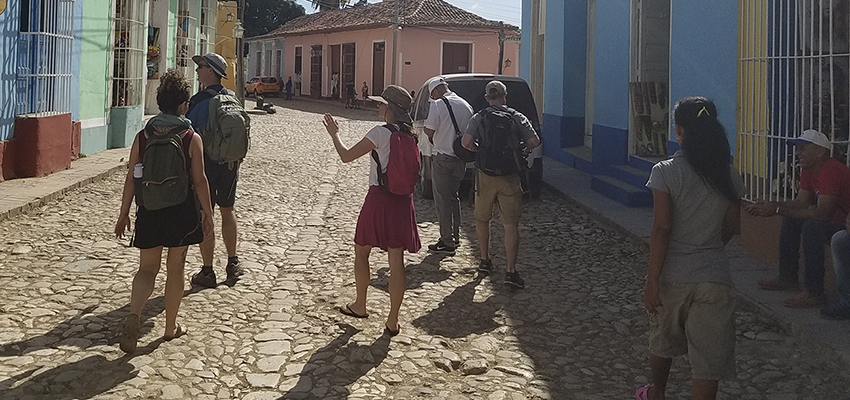
HWS News
12 March 2021 • STEM Pirate Plants of the Caribbean
A new study led by Professor of Biology Meghan Brown documents that Cuba is home to hundreds fewer invasive plant species than expected.
Why does Cuba have comparatively fewer invasive plant species than its Caribbean neighbors?
Its economic isolation during the past 60 years is a major factor that limited the arrival and establishment of plants to the island via tourism and trade, according to a new study led by Professor Meghan Brown.
“Plant pirates of the Caribbean: is Cuba sheltered by its revolutionary economy?” was published this month by Frontiers in Ecology and the Environment and subsequently featured in National Geographic and Nature.
The study “contextualizes the unique deficit of non-native plants in Cuba, despite the Caribbean being a location where most islands have experienced abundant and damaging invasions. This deficit is consistent with Cuba’s relatively isolated, self-sufficient economy. Globally, non-native species introductions are in large part unintended consequences of economic openness — principally through international trade,” says Brown, who lead the research team that included collaborators from Cuba and three other New York Six colleges.
Across the 45 Caribbean islands that Brown and her colleagues studied, tourism rates and island area explain 90% of the non-native plant diversity. As the National Geographic coverage notes, “the team found that in general, the larger the island, the more invaders it tended to have. But Cuba was an outlier: Its intruder counts were on par with Puerto Rico’s, a 10th of Cuba’s size.” Brown notes that “small tourist-dominated economies, like St. Thomas and Grand Cayman, support hundreds more invasive plants than we’d expect for islands of their size. Ornamental plants used for landscape hotels are a notable problem on these islands as they are intentionally planted and then spread. Tourists can also carry plants and seeds in their belongings and shoes.”
“Tourism’s central role in biological invasions is a novel finding at this grand scale but also logical, given it is the Caribbean’s economic engine and offers a pivotal perspective for the research and management of biological invasions. Our work also addressed modern and historical trade but these factors were overwhelmed by the impact of the tourism economy,” Brown explains. “This is particularly apparent for Cuba, which has been among the least visited and most regionally isolated Caribbean locations over the last 60 years but that is rapidly changing and presents both a vulnerability to increased invasions and an opportunity for policies that minimize non-native plant dispersal to (and from) Cuba.”
The paper was published in English but required extensive communication in Spanish because the scientists involved were English-speakers and Spanish-speakers and the associated literature and datasets were also in multiple languages. Associate Professor of Spanish and Hispanic Studies May Farnsworth joined the research team in their endeavors.
“The science and its communication are all the better for our careful consideration to language and a shared scientific mission that transcends, and may inform, two politically divided nations,” Brown says.
Read the coverage in National Geographic and Nature, or read the full paper.
Learn more about faculty and student research at HWS.

